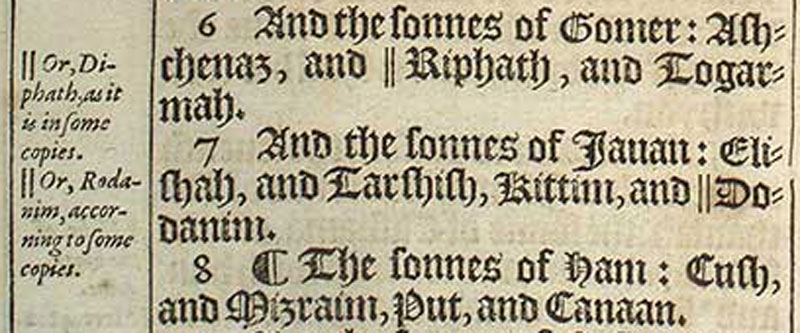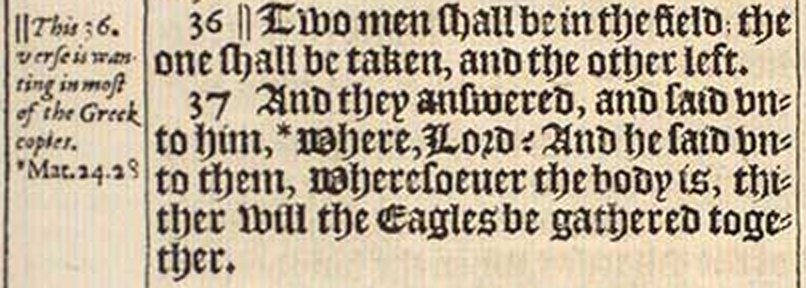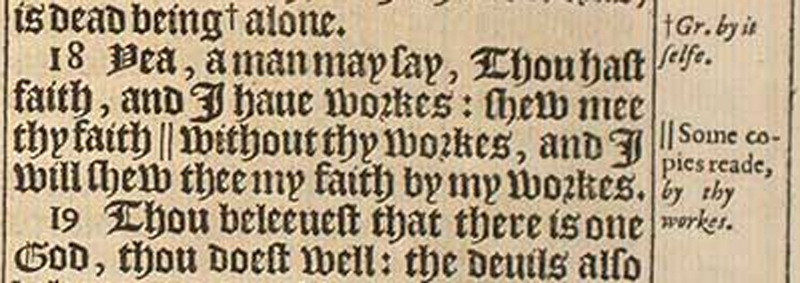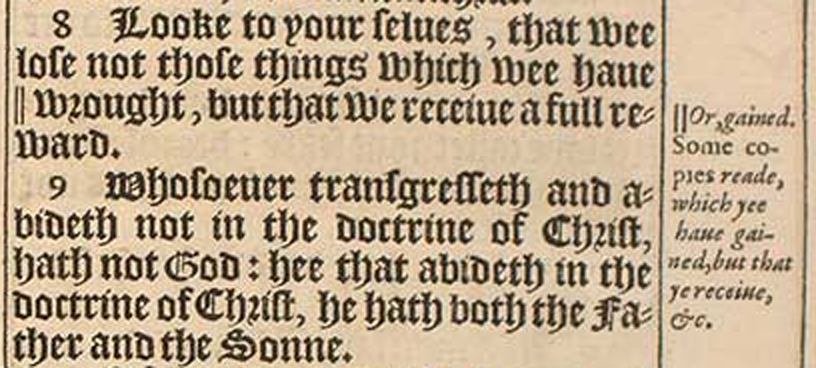Marginal Notes in the KJV 1611

One that that has always intrigued me about the 1611 is the plethera of maginal notes throughout the entirety of the text. Footnoting has been a long-standing tradition in literature. That tradition has held steady in Bibles for centuries including the stalwart King James (literaturabautista.com has posted a complete list of the marginal notes there you can pursue here).
What stands out to me are the marginal notes regarding variant readings within the comparatively sparse collection of manuscripts and critical editions used in the translation.
For your viewing pleasure, you can see the notes below (images helpfully provided by the good folks at KingJamesBible.com):
1 Chronicles 1:6 and 7:
Or, Diphath, as it is in some copies.
Or, Rodnim, according to some copies.
Ezra 2:33
Or, Harid, as it is in some copies
Ezra 10:40
Or, Mabnadebai, according to some copies.
Matthew 26:26
Many Greeke copies have gave thanks
Luke 10:22
Many ancient copies add the words, And turning to his Disciples he said.
Luke 17:36
This 36 verse is wanting in most of the Greek copies.
Acts 25:6
Or, as some copies read, no more than eight or ten dayes.
James 2:18
Some copies reade by thy workes.
2 Peter 2:2
Or lasciuious wayes, as some copies reade.
2 John 1:8
Some copies reade, which yee have gained, but that ye receive etc.
These notes are important for at least reasons:
1. Translating is very difficult, detailed work. Anyone going word-by-word through any text is going to have observations or issues arise that won’t fit in their translation or copy. For at least 1,500 years, scribes and scholars have used the margins to gather those observations and comments. We should be very grateful for their attentive (if not retentive) notes and we should honor their efforts by actually reading them.
2. Many KJV-Only advocates decry modern versions because these modern versions (or “PERversions”) confuse the reader by introducing doubts and ambiguities through endless footnotes. The existence of over 700 such marginal notes in the 1611 KJV make such a position untenable. William Combs has more discussion here.
3. Many have attacked the reliability of the Bible by speaking of textual variants as a if it’s been a secret kept from believers –a secret uncovered by the diligence of free-thinking scholars. This is so absurd. Variant readings in the Bible (especially the NT) have been known and included in the margins or footnotes for centuries. It’s only a surprise to people who couldn’t be bothered to read them.











Member discussion